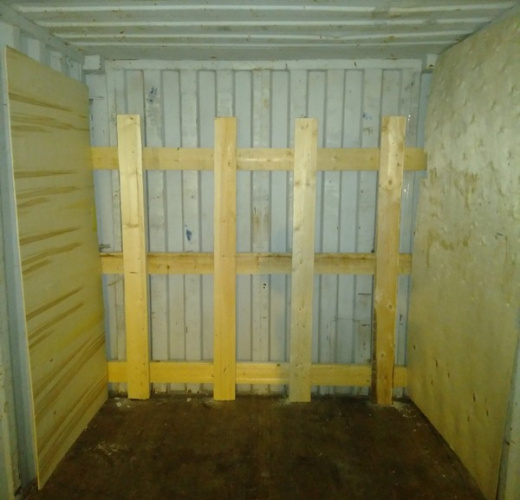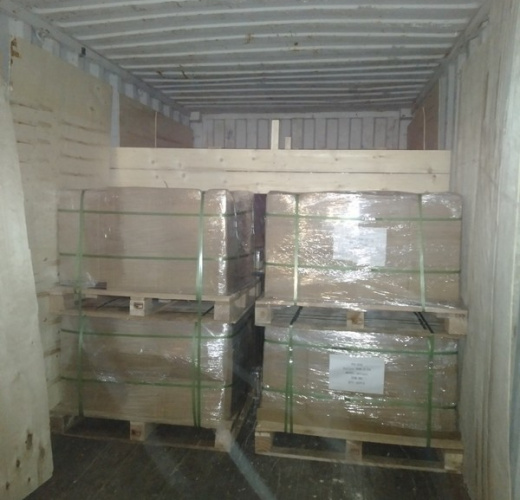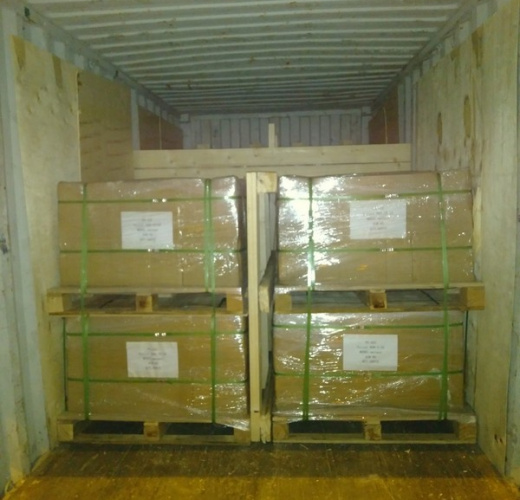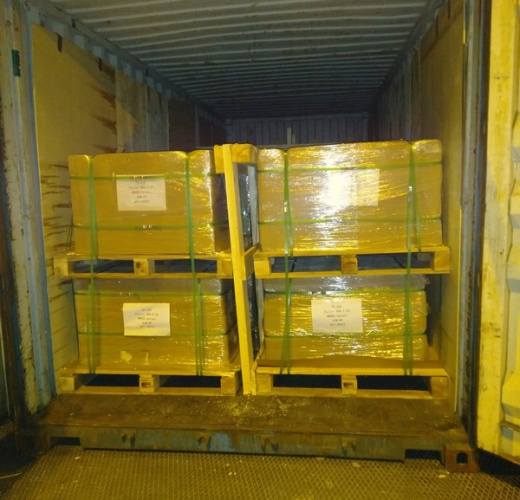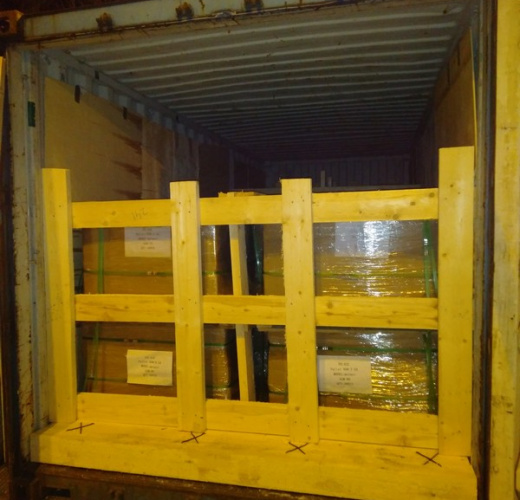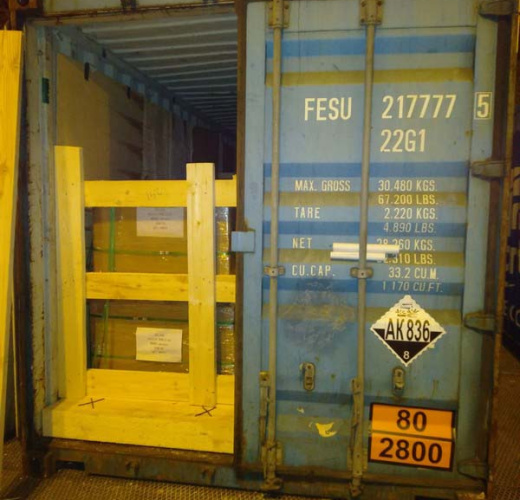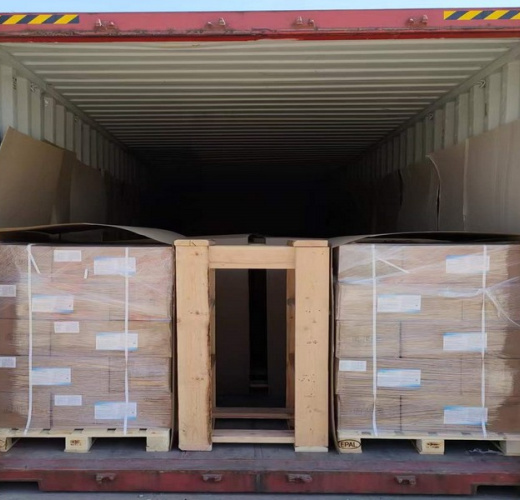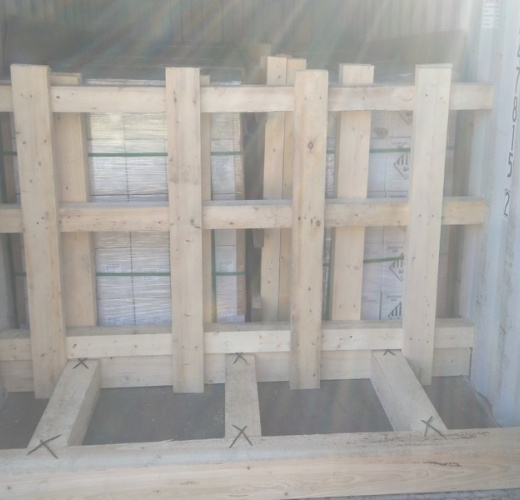Instructions for securing dangerous cargo in a container
To deliver containers with dangerous goods for loading at a railway station, it is necessary to observe the rules for placing and securing cargo in a container according toChapter 12 of the Technical Specifications (approved by the Ministry of Railways of the Russian Federation on 05/27/2003). If the placement of cargo in a container does not fit the scope of this chapter,cargoit must be placed and secured according to the developed and approved in accordance with the established procedure" >NTU. Securing the cargo according toChapter 12 of the TUor, according to the developed and agreed NTU, it should be carried out by the shipper before sending the cargo by sea (before loading onto the ship).
The container must be loaded according torules for the transportation of dangerous goods, which can be found by clicking on the link.
Before accepting dangerous goods for transportation, the following mandatory requirements must be met:
- It is necessary to provide documents for the cargo in addition to the standard set of documents (invoice,packing listetc.):
- safety data sheet (MSDS) in English and in Russian , indicating the technical name of the cargo;
- certificate for packaging, stamped, with translation into Russian.
- According to paragraph 2.1.1. of the "Rules for the carriage of dangerous goods", dangerous goods must be presented by shippers for transportation in containers and packaging provided for by standards or specifications for these products and GOST 26319-84 "Dangerous goods. Packaging". Certificates (certificates) of compliance of containers (packaging) with the requirements of this standard in a foreign language must have a translation into Russian, certified by the seal of the forwarder, with the translator's diploma attached.
- All cargo, including dangerous goods, must be placed and secured in a container according to the requirementsChapters 12 of the Technical Conditions.
- In cases where the loading of the cargo planned for transportation is not provided for in Chapter 12 of the Technical Specifications, it is required to develop an NTU, the cost of which is additionally reported, coordination and placement of cargo in a container according to the NTU. Cargo that will be loaded in 2 tiers or not up to full capacity is not accepted for transportation by rail.
- A shield must be installed at the end of the container and the doorway.
- Bags or barrels must be placed on pallets.
- Loads on pallets must be vertically separated by plywood or cardboard from the walls of the container and from each other. The empty spaces between the pallets must be filled with spacers to prevent cargo movement.
- If there is free space between the cargo and the container doors, it is necessary to make a spacer frame.
- Cargo in Eurocubes is accepted for transportation without NTU if 18 or 20 Eurocubes are loaded into the container. When transporting 18 Eurocubes, a spacer frame is required. In all other cases, the development of NTU is necessary.
- As a confirmation of the correctness of loading the cargo, the Client must provide photos of the cargo before sending the cargo by sea (before loading on the ship).:
- Photos of each row of cargo, starting from the end wall of the container and so on to full loading, ending with a doorway with a readable container number.
- Photos of a fully loaded container without a shield with 2 doors fully open.
- Photos of a fully loaded container with a shield and 2 doors fully open (the shield must meet the requirements of the technical specifications).
- Photos of a fully loaded container with a shield and a closed right working door with a readable container number.
- Photos of a fully closed container with a ZPU locking device installed (a general view of two closed doors withthe attached PO on the regular place).
An example of the correct attachment of a dangerous cargo.
In case of non-fulfillment of any of the above conditions, the cargo will not be accepted for carriage.
All expenses related to the impossibility of organizing the transportation of dangerous goods due to non-fulfillment of the above requirements are subject to mandatory reimbursement by the Client or his shipper.
If incorrect loading is detected, the container will not be accepted for shipment by rail. Such loading will not be agreed upon and the containers will be put up at the port for revision at an additional cost.
- Views: 2680
- Government Resolution No. 778 dated 07/06/2018
- Which goods are declared as one product
- Government Resolution No. 2240 dated 07.12.2022
- What is required for DS according to TR CU 009/2011
- What is required for CC or DS according to TR CU 004/2011
- What is required for CC or DS according to TR CU 020/2011
- Customs control of the value of goods



